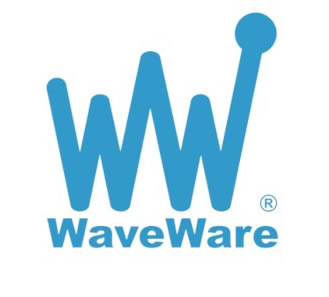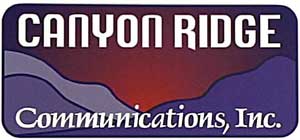Selected portions of the BloostonLaw Telecom Update, and/or the BloostonLaw Private Users Update — newsletters from the Law Offices of Blooston, Mordkofsky, Dickens, Duffy & Prendergast, LLP are reproduced in this section with the firm’s permission.
| BloostonLaw Telecom Update | Vol. 18, No. 12 | March 18, 2015 |
FCC Releases Open Internet Order and Order Granting TN and NC Preemption RequestsOn March 12, the FCC released its now-infamous Open Internet Report and Order on Remand, Declaratory Ruling and Order. While BloostonLaw attorneys are still reviewing the 400 page document (with dissenting statements), the Order makes clear that broadband providers always must disclose promotional rates, all fees and/or surcharges, and all data caps or data allowances; adding packet loss as a measure of network performance that must be disclosed; and requiring specific notification to consumers that a “network practice” is likely to significantly affect their use of the service (with a temporary exemption for providers with 100,000 or fewer subscribers). That same day, the FCC also released the Memorandum Opinion and Order granting petitions seeking FCC preemption of state statutes filed by the Electric Power Board in Chattanooga, Tennessee, and the City of Wilson, North Carolina that prevent these cities from providing broadband service outside the municipal utility service areas. The important takeaway from this Order is that while it technically only applies to the specific laws in Tennessee and North Carolina for which preemption was sought, the FCC said that it will not hesitate to preempt similar statutory provisions in factual situations where it finds they function as barriers to broadband investment and competition. Headlines
Reply Comments Filed on LEC Petition on IntraMTA ChargesReply comments were filed on March 9, 2015, on the Petition for Declaratory Ruling filed by Bright House Networks, CenturyLink LECs, et al., asking the FCC to confirm that the intraMTA rule does not apply to LEC charges billed to an IXC when the IXC terminates traffic to or receives traffic from a LEC via tariffed switched access services. The Petitioners also asked the Commission to declare that IXC attempts to avoid paying access charges and to claim retroactive refunds are inconsistent with the Communications Act of 1934, as amended ("the Act") and the Commission's rules and policies. In addition to the Rural Associations and a number of groups of rural carriers, the Blooston Rural Carriers added their voice to the debate and filed in support the Petitioners' request. The Blooston Rural Carriers, however, also argued that grant of the Petition is consistent with and necessary to promote the Act's and the Commission's preference for negotiated compensation between carriers and to promote the rule established by the Commission in the Transformation Order to limit the liability of rural, rate-of-return carriers for transport costs in connection with LEC-CMRS traffic. Specifically, in the Transformation Order, although the Commission concluded that bill-and-keep should be the default compensation applicable to LEC-CMRS intraMTA traffic, the Commission established an interim default rule whereby the rural, rate-of-return LEC is “responsible for transport to the CMRS provider's chosen interconnection point when it is located within the LEC's service area” and when the CMRS provider's chosen interconnection point is located outside the LEC's service area, “the LEC's transport and provisioning obligation stops at its meet point and the CMRS provider is responsible for the remaining transport to its interconnection point.” The Blooston Rural Carriers argued that adoption of the IXC's arguments would gut this protection for rural LECs and leave rural LECs "holding the bag" for transport costs far outside their service area. Reminder: WCB Extends Date for Study Area Boundary Changes Until March 23; Recertifications due May 26As reported in a special edition of the BloostonLaw Update last week, the Wireline Competition Bureau (WCB) has extended the date for filing revised study area boundary data for incumbent LECs (ILECs) to reflect changes made during 2014, until March 23, 2015. The FCC extended the original deadline of March 16, 2015, because of technical difficulties with the Study Area Boundary Data Collection interface, which have been resolved. According to the WCB, filers can now submit and certify shapefiles using the interface. Some examples of events that would cause study area boundaries to change include a transaction involving the addition or sale of exchanges; new deployment into previously-unserved areas, such as a new housing subdivision; or an ILEC relinquishing its ETC designation and no longer being obligated to serve an area as a carrier of last resort. Under the WCB's procedures, either the ILEC or the state commission submitted the original study area boundary data for an ILEC. Where the state commission originally submitted the data, the state commission should file the revised study area boundary data by March 23, 2015. In cases where the state commission did not submit data for the ILEC and the ILEC submitted the data, then the ILEC should file the revised study area boundary data by March 23, 2015. In addition to the obligation to submit updated information when study area boundaries change, all ILECs are required to recertify their study area boundary data every two years. The recertification is due this year by May 26, 2015. Again, where the state commission filed the study area boundary data for an ILEC, the state commission should submit the recertification. However, where the state commission did not submit data for the ILEC and the ILEC submitted the study area boundary data, then the ILEC should submit the recertification by May 26, 2015. The WCB currently is working to upgrade the data collection interface to allow for the recertification of data and it will provide additional information once the upgrade is completed. Law & Regulation FCC Pauses 180-Day Clock in Comcast-Time Warner and AT&T-DirecTV TransactionsOn March 13, the FCC issued a Public Notice pausing the 180-day clock on both the Comcast-Time Warner Cable-Charter and AT&T-DirecTV transactions pending the decision of the United States Court of Appeals for the District of Columbia Circuit on a Petition for Review and request for stay filed on November 13, 2014. The Petition for Review deals with the ability of outside counsel and outside experts employed by the various participants to review, solely in connection with their participation, certain confidential information that has been filed in the respective records for these proceedings. Specifically, the Petition for Review deals with a class of confidential information called Video Programming Confidential Information. On November 21, 2014, the court granted the request for stay and heard oral argument on the merits of the Petition for Review on February 20, 2015. However, it has not yet issued its decision. Since the FCC believes it would be advantaged by knowing the resolution of the Petition for Review before the transaction clocks reach the 180-day mark, it has elected to pause the clock for both proceedings. The 180-day clock is an informal timeline for consideration of applications for transfer or assignment of licenses in complex mergers, not a statutory requirement. As such, the FCC points out, it retains the discretion to determine whether, in any particular review proceeding, events beyond the agency’s control, the need to obtain additional information, or the interests of sound analysis constitute sufficient grounds to stop the clock. Montgomery County Challenges FCC’s Tower Siting OrderMontgomery County, Maryland has challenged the FCC’s October 21, 2014 Report and Order which imposed new rules on tower siting pursuant to Section 6409(a) of the Middle Tax Relief and Job Creation Act of 2012. Montgomery County stated that the rules adopted in the Report and Order were “inconsistent with the United States Constitution; an unlawful interpretation of Section 6409(a) and other statutory provisions; arbitrary and capricious and an abuse of discretion; and otherwise contrary to law”. The initial filing by Montgomery County did not provide any details concerning the substance of its claims, although conventional wisdom suggests that the 60-day shot-clock for local jurisdictions to act on tower siting requests is likely to be one of the main issues. The County did request that the Court find the FCC’s action to be unlawful and that the Report and Order be vacated and that the FCC be enjoined from enforcing the rules. Because other appeals may have been filed in this proceeding, the Court that takes jurisdiction over the case will issue a briefing schedule. At that point, Montgomery County and others will be required to make their arguments in detail. The Personal Communications Industry Association (PCIA) has raised concerns about the Montgomery County challenge in a press release, stating: "PCIA is working closely with cities, counties, and municipalities to make the implementation of the FCC’s new wireless facility siting regulations smooth and efficient. The wireless infrastructure industry wants to reduce or eliminate, whenever possible, obstacles to realizing the extraordinary economic and technological potential of wireless broadband. We hope that this lawsuit will not detract from that goal, since PCIA supports the FCC’s rationale behind its Infrastructure Order and its guidelines for implementation." Verizon Agrees to $3.4 Million Settlement Over California 911 OutageThe FCC announced today that MCI Communications Services, Inc. d/b/a Verizon Business Services (Verizon) has agreed to enter into a consent decree in order to resolve an FCC investigation into its failure to “meet its emergency call obligations during a multi-state 911 service outage last year” as a result of a six-hour outage in April 2014 that affected wireless customers in nine-county area of California. This outage occurred during a trial to test a new method for routing wireless 911 calls to the proper Public Safety Answering Point (PSAP). The FCC stated that this outage was part of a much broader 911 outage that affected over 11 million people and 83 call centers in seven states. During this outage, 62 wireless 911 calls were not able to reach 13 public safety dispatch centers. The FCC indicates that Verizon’s contractor, Intrado, allegedly did not inform Verizon of the outage until after it resolved the outage. Upon learning of the scope of the 911 outage, Verizon notified the State of California Office of Emergency Communications. Over the past 30 years, 911 has become the ubiquitous number to dial in the event of an emergency. The FCC takes very seriously the obligation of telephone service providers to ensure that emergency telephone service is available to the public. As part of the settlement, Verizon agreed to a “robust” compliance plan that requires Verizon to: (a) identify risks that could result in disruptions to 911 service and protect against those risks; (b) detect future 911 outages; (c) respond with remedial actions, including notification to all affected emergency call centers; and (d) recover from the outages in a timely manner. In addition to this Compliance Plan, Verizon will also be required to improve its oversight over its Next Generation 911 subcontractors, maintain up-to-date contact information for all emergency call centers and coordinate with the emergency call centers that it serves on a periodic basis in order to review Verizon’s outage notifications. This case illustrates the importance of ensuring that reliable 911 communications are provided, and notifying emergency officials as soon as problems are detected. The FCC’s rules require wireline telephone service providers to notify by telephone or other electronic means, the designated official for each and every affected 911 special facility that experiences an outage of at least 30 minutes. This notification must include “all available information that may be useful” to the management of the affected 911 call center in mitigating the effects of the outage on the public. Industry
Verizon Calls Out DISH for Inflating Spectrum PricesAs the Blooston Rural Carriers were meeting with the FCC about the harmful impact of “special purpose designated entities” in dominating bidding and bid credits in the AWS-3 auction, Verizon CFO Fran Shammo publicly noted another harmful effect of bidding efforts of entities backed by DISH. As reported by Wireless Week, Shammo said at a recent conference that in the past spectrum cost less than it did to add capacity using technology. “This auction flipped that balance. We can build capacity for a third of what this spectrum is going to cost,” Shammo said, noting that the FCC’s bidding rules need to be revised to account for companies like DISH, which took home huge amounts of spectrum at a discount while driving up prices for others. Shammo said that until the cost of spectrum comes down there is “no reason for us to go into the secondary market and buy spectrum at this price. It just doesn't make sense.” Unfortunately, unlike nationwide carriers, small and rural carriers may not have the ability to overcome one-sided bidding tactics by simply adding more and more infrastructure to manufacture capacity, especially where terrain and low population density would make this workaround cost prohibitive. Calendar At A Glance
March
Mar. 23 – Comments are due on 911 Policy NPRM.
Mar. 30 – Comments are due on Letter of Credit Requirements.
Mar. 31 – FCC Form 525 (Delayed Phasedown CETC Line Counts) is due.
Mar. 31 – FCC Form 508 (ICLS Projected Annual Common Line Requirement) is due.
Mar. 31 – International Circuit Capacity Report is due. April
Apr. 1 – FCC Form 499-A (Annual Telecommunications Reporting Worksheet) is due.
Apr. 1 – Annual Accessibility Certification is due.
Apr. 7 – Reply comments are due on 911 Outage NPRM.
Apr. 13 – Reply comments are due on Letter of Credit Requirements.
Apr. 14 – Deadline for reply comments on Online Public File Expansion NPRM.
Apr. 21 – Reply Comments are due on 911 Policy NPRM. May
May 1 – FCC Form 499-Q (Quarterly Telecommunications Reporting Worksheet) is due.
May 31 – FCC Form 395 (Annual Employment Report) is due. |
























 .
.


















 David George and Bill Noyes
David George and Bill Noyes
































